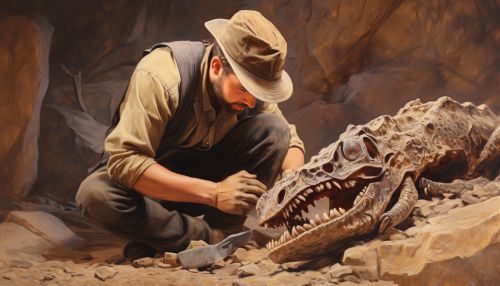Vertebrate Paleontology
Introduction
Vertebrate Paleontology is a subfield of paleontology that focuses on the study of ancient vertebrate animals. It involves the analysis of fossilized bones, teeth, and other hard parts of vertebrates to understand their evolutionary history and the changes in their biological structures over time.
History of Vertebrate Paleontology
The roots of vertebrate paleontology trace back to the works of early naturalists and explorers. The first scientific recognition of fossils as remains of ancient organisms can be attributed to Da Vinci in the 15th century. However, it was not until the 19th century that vertebrate paleontology emerged as a recognized scientific discipline, largely due to the work of Cuvier and Owen.


Principles and Techniques
Vertebrate paleontologists employ a range of techniques to study fossils. These include comparative anatomy, where the structures of modern and ancient vertebrates are compared, and stratigraphy, which involves studying the layers of rock in which fossils are found to determine their age. Other techniques include cladistics, a method of classifying organisms based on their evolutionary relationships, and paleobiology, which studies the behavior and ecology of ancient organisms.
Major Discoveries
There have been numerous significant discoveries in vertebrate paleontology. These include the discovery of dinosaurs, the first birds, and the first mammals. Other notable discoveries include the first fossils of early humans, such as Australopithecus and Homo habilis, and the discovery of transitional fossils, such as Tiktaalik, which provide evidence for the evolution of fish into land-dwelling vertebrates.
Current Research and Future Directions
Current research in vertebrate paleontology is diverse and multidisciplinary, encompassing areas such as evolutionary biology, geology, and ecology. Future directions for the field include the integration of new technologies, such as computed tomography and genomics, to gain deeper insights into the anatomy and evolution of ancient vertebrates.
